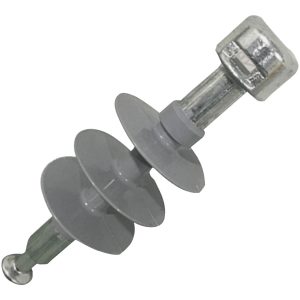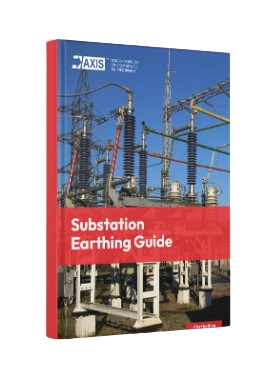How are Axis Polymeric Insulators made?
A polymeric insulator, also known as a composite insulator, is an electrical device designed with an insulation section made from polymer materials and metal fittings.
Axis polymeric insulators are crafted using high-quality materials to ensure durability. The insulation unit is composed of fiberglass, providing a robust and reliable core. Surrounding this core is a protective ribbed mold made from silicon organic rubber, offering excellent resistance to environmental stress. The flanges, which are essential for connecting the insulator, are constructed from an anti-rust alloy. This combination of materials ensures that the insulators perform safely and effectively under various climatic conditions.
Showing all 2 results
-

Polymer Disc Insulator
Select options This product has multiple variants. The options may be chosen on the product page -

Polymeric Pin Insulator
Select options This product has multiple variants. The options may be chosen on the product page
Benefits of Axis Polymeric Insulators
Axis polymeric insulators offer simple maintenance, eliminating the need for washing during their entire service lifespan when installed in recommended pollution areas. They are significantly lighter than their porcelain counterparts, weighing three to five times less.
Their hydrophobic properties and anti-pollution design make them highly resistant to environmental contaminants. These insulators also boast high shock resistance, seismic stability, and excellent moist-discharge properties. They can withstand significant torsion and flexure, and their vandal-proof design ensures durability.
With no brittle failure and a ten-fold mechanical factor of safety, they provide reliable performance. The dielectric strength exceeds 40 kV/cm, thanks to the solid fiberglass rod. Additionally, the flanges are made from corrosion-resistant aluminum and zinc alloy, ensuring longevity and robustness in various conditions.
Where are Axis Polymeric Insulators Used?
Axis polymeric insulators, rated for 11kV and 33kV voltages, are essential for reliable and safe power transmission and distribution across electrical networks. Their unique insulation properties make them suitable for various applications.
Overhead transmission lines utilize these insulators to support high-voltage wires, preventing electricity from leaking to the ground or arcing between conductors. They are especially beneficial in areas like mountain passes and open fields, where wind and weather conditions put stress on the lines.
In urban environments, utility companies install these compact insulators on power poles and in narrow passages. In rural settings, they are found along roads and fields, adept at handling dirt and changing weather conditions.
Inside substations, these insulators insulate components such as circuit breakers and transformers from grounded structures, preventing electrical faults. They are also installed on switchgear indoors and on transformers and busbars outdoors.
In the railway industry, these insulators are crucial for overhead rail electric traction systems, supplying power to train engines and ensuring efficient traction electrification.




